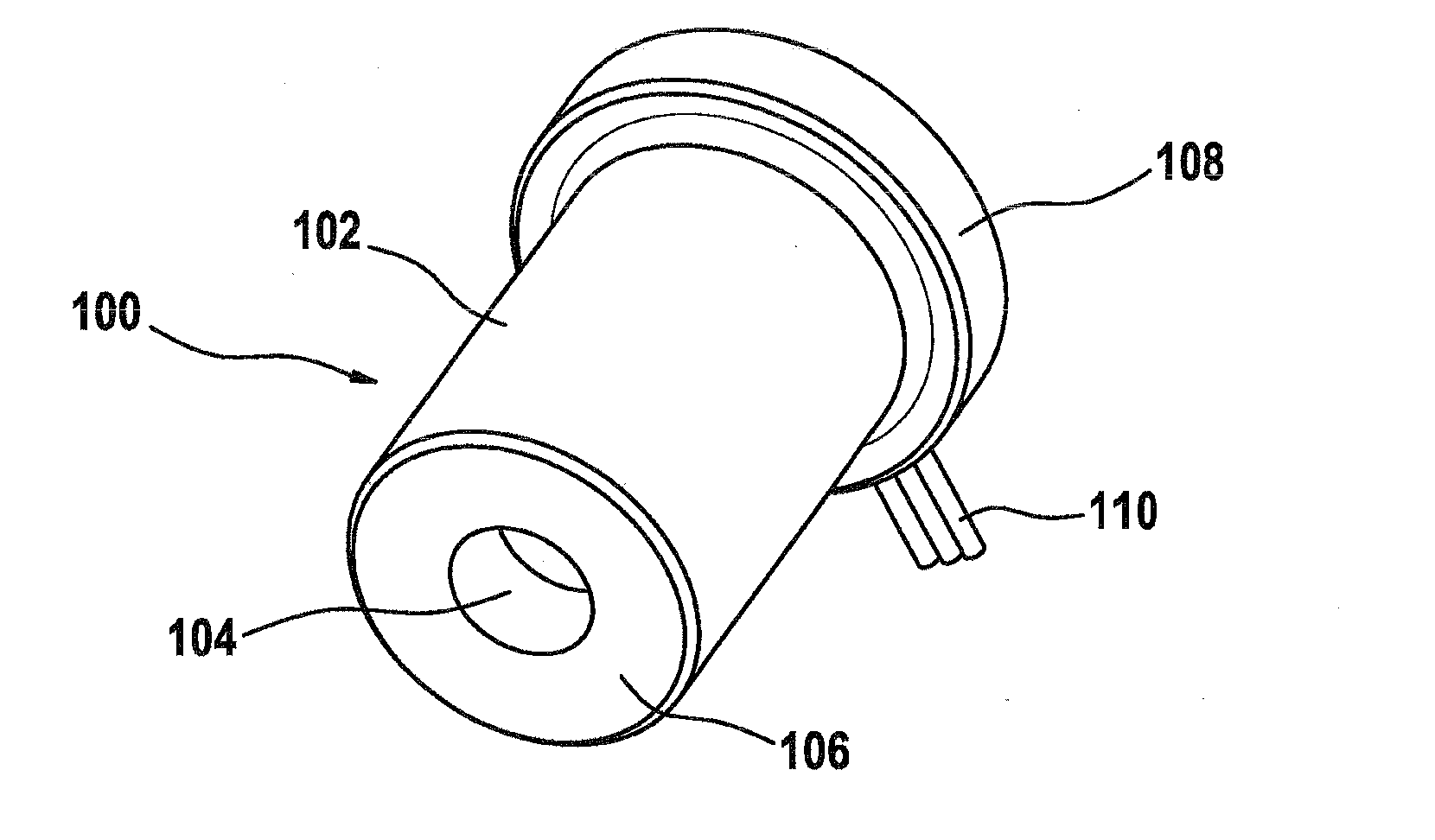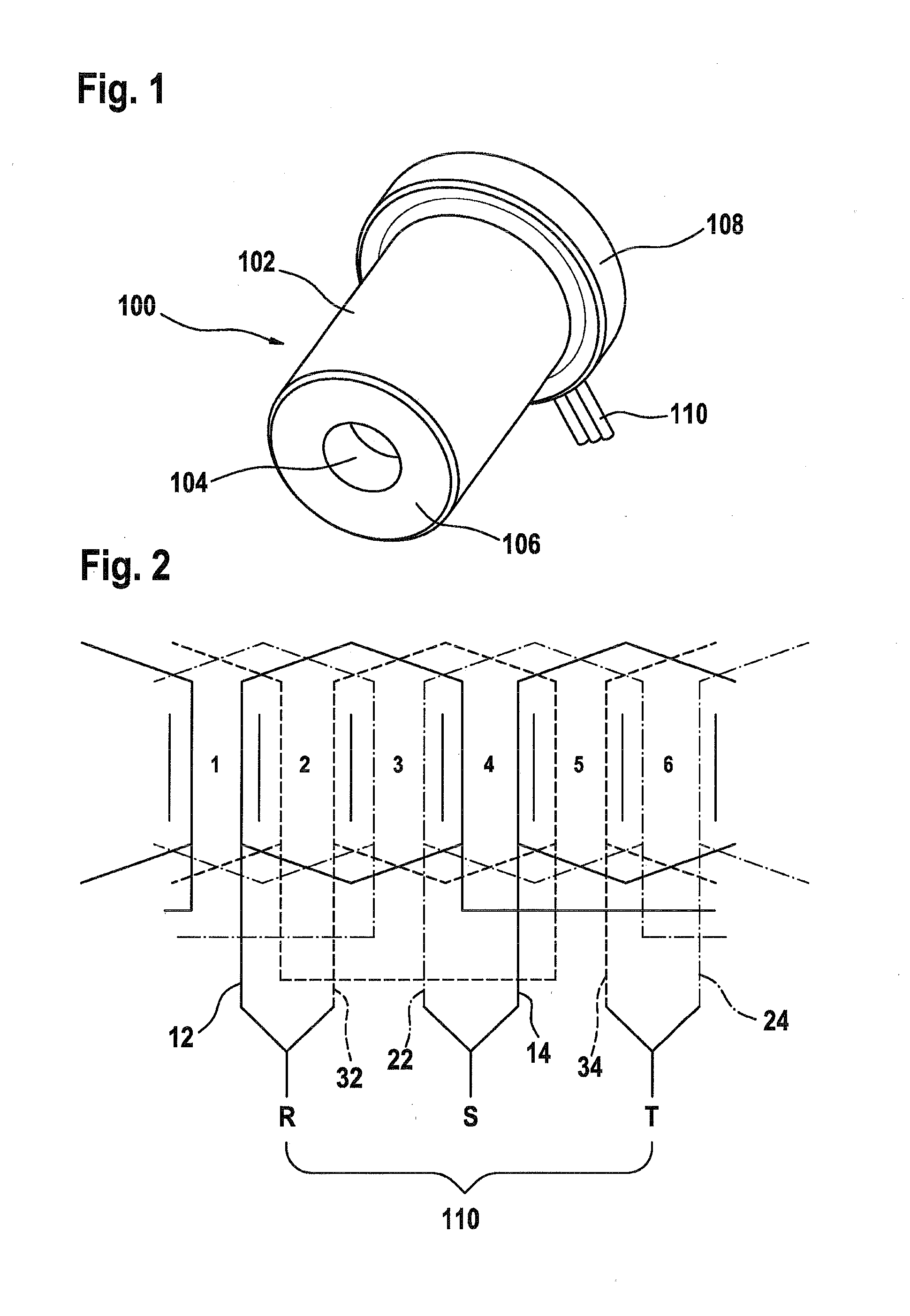Winding body for an electric motor and method for producing a winding body for an electric motor
a technology of electric motors and winding bodies, which is applied in the direction of windings, mechanical energy handling, dynamo-electric components, etc., can solve the problems of unjustifiable amount of automation and complicated handling, and achieve the effects of reducing efficiency, increasing output of drives, and increasing efficiency of drives
- Summary
- Abstract
- Description
- Claims
- Application Information
AI Technical Summary
Benefits of technology
Problems solved by technology
Method used
Image
Examples
Embodiment Construction
[0028]Elements that are the same or similar-acting are labelled using the same reference numerals in the figures.
[0029]FIG. 1 shows a preferred winding body 100 for an electric motor, which is designed, e.g., as an electronically commutating, brushless direct current electric motor (BLDC motor) that includes an air-gap winding. The winding body is coreless in design and is shaped roughly as a pot having a cylindrical section 102, an inwardly pointing winding overhang 106 on one end which forms a base which is open in the center, and an outwardly folded winding overhang 108 which forms a ridge-like edge on the other end of winding body 100. Current may be supplied to the winding body during operation via an electrical contact 110. In the installed state, a rotor of the electric motor is located in interior 104 of winding body 100; the rotor shaft of the rotor extends out of both ends of winding body 100.
[0030]FIG. 2 shows a winding scheme of the type used for a three-phase, two-pole ...
PUM
 Login to View More
Login to View More Abstract
Description
Claims
Application Information
 Login to View More
Login to View More - R&D
- Intellectual Property
- Life Sciences
- Materials
- Tech Scout
- Unparalleled Data Quality
- Higher Quality Content
- 60% Fewer Hallucinations
Browse by: Latest US Patents, China's latest patents, Technical Efficacy Thesaurus, Application Domain, Technology Topic, Popular Technical Reports.
© 2025 PatSnap. All rights reserved.Legal|Privacy policy|Modern Slavery Act Transparency Statement|Sitemap|About US| Contact US: help@patsnap.com



